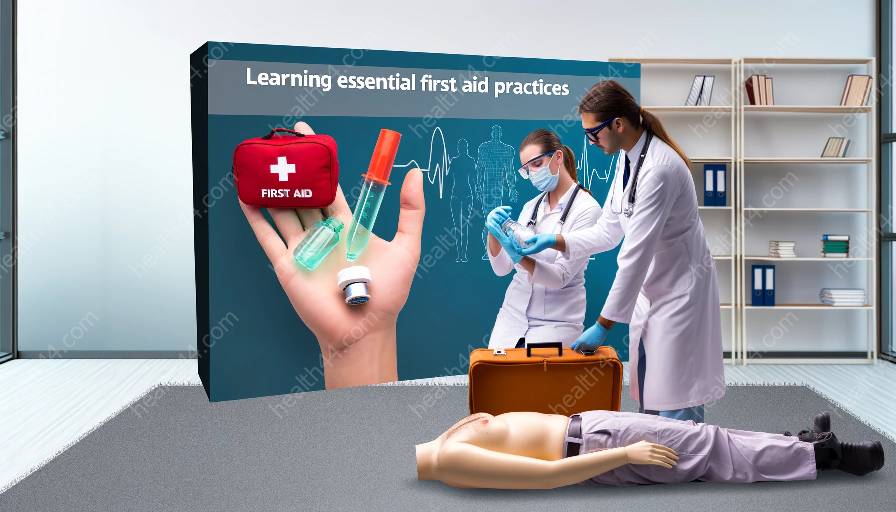Allergic reactions and anaphylaxis are serious medical conditions that require prompt recognition and intervention. This topic cluster covers the causes, symptoms, and first aid for allergic reactions and anaphylaxis, with a focus on the intersection of first aid and health education & medical training.
Allergic Reactions: Causes and Symptoms
An allergic reaction occurs when the immune system overreacts to a harmless substance, such as food, medication, insect venom, or latex. Common allergens include peanuts, shellfish, penicillin, bee stings, and latex. When an allergic person comes into contact with an allergen, their immune system releases histamine and other chemicals, leading to symptoms such as hives, itching, swelling, wheezing, and in severe cases, anaphylaxis. Individuals with allergies may carry an epinephrine auto-injector to counteract severe reactions.
First Aid for Allergic Reactions
- Recognition: Recognizing the signs of an allergic reaction is crucial. Symptoms can range from mild to severe and may progress rapidly. Educating the public about allergy symptoms and the importance of seeking immediate medical assistance is essential.
- Intervention: If a person is experiencing an allergic reaction, it is important to help them use their prescribed epinephrine auto-injector if available. Emergency medical services should be contacted immediately for further assistance.
- Follow-up Care: After administering epinephrine, the affected individual should seek medical evaluation and follow-up care. Health education plays a vital role in ensuring individuals know how to manage allergic reactions and when to seek medical attention.
Anaphylaxis: Symptoms and First Aid
Anaphylaxis is a severe, life-threatening allergic reaction that requires immediate medical attention. It can occur within minutes or even seconds of exposure to an allergen and may involve multiple body systems. Symptoms can include difficulty breathing, a drop in blood pressure, loss of consciousness, and cardiac arrest.
First Aid for Anaphylaxis
- Rapid Response: When a person is experiencing anaphylaxis, immediate action is required. Call emergency medical services and administer epinephrine if available, following the prescribed instructions. Health education programs should emphasize the importance of quick intervention in anaphylactic emergencies.
- Supportive Care: While waiting for emergency medical assistance, it is important to help the individual remain calm, lying down, and elevate their legs to improve blood circulation. Health education and medical training can equip individuals with the knowledge to provide this crucial support effectively.
- Long-Term Management: After an episode of anaphylaxis, individuals should receive follow-up care and guidance on allergen avoidance, carrying emergency medications, and recognizing symptoms of a potential future reaction.
Impact of Health Education & Medical Training
Health education and medical training play a crucial role in managing allergic reactions and anaphylaxis. By raising awareness about common allergens, symptoms of allergic reactions, and the proper administration of epinephrine and first aid, these initiatives help save lives. Furthermore, healthcare providers, first aid responders, and the general public should receive proper training to respond effectively to allergic emergencies. With adequate health education and training, individuals can confidently take appropriate action during an allergic reaction or anaphylactic episode, potentially preventing tragic outcomes.
Conclusion
Understanding allergic reactions and anaphylaxis is essential for everyone, especially those involved in first aid and healthcare. By recognizing the symptoms, providing prompt intervention, and promoting ongoing health education and medical training, communities can work towards creating safe environments for individuals at risk of allergic reactions and anaphylaxis.



